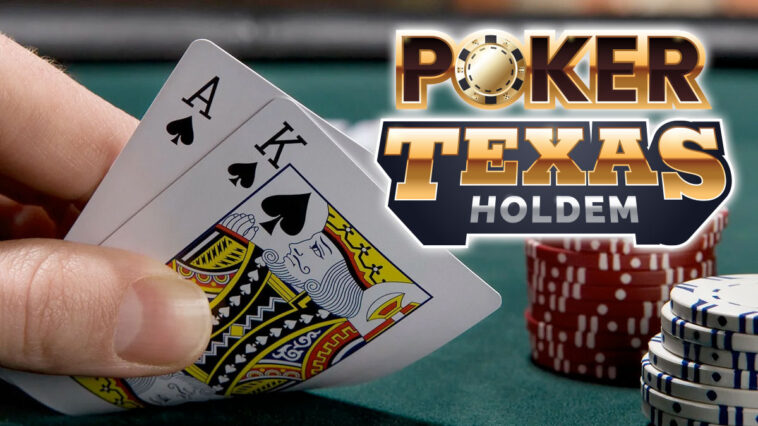I’ve written a couple of blog posts recently about big picture poker strategy stuff, but for a change of pace, I want to cover some of the on-the-ground tactical stuff that matters, too. This aspect of poker strategy begins with starting hand selection and how to play various starting hands.
Since Texas hold’em is still the most popular version of poker in the United States – and it’s the game I’m most familiar with – I’m going to cover various starting hands in no limit Texas hold’em and offer some suggestions about how to play them.
None of these guidelines are written in stone. Any play can make sense if you understand the reason behind making that play.
The Best of the Best Starting Hands – Aces and Kings
The most premium starting hands in the game are pairs of aces or kings.
I have a buddy who hates the way I play kings and aces from early position in a no limit game. He thinks I should ALWAYS raise with these hands, no matter what position I’m in. I’m convinced that limping in with aces or kings from early position is the right move.
That’s because I’m hoping someone will raise after me. If I’m at a full table with 9 players, I’ll almost always see someone raise, at which point I can re-raise aggressively. Even if I’m at a reasonably aggressive short-handed table, I’ll limp if I’m first to act.
If I’m in middle position, and if no one has raised before I’ve acted, I’ll limp about half the time and raise the other half of the time. This is one of those opportunities to mix up your play and be unpredictable.
If I’m in late position, though, and no one has raised before me, I’m going to raise.
I have the strongest starting hand in the game.
It’s important to get my money in the pot because I almost always have the best of it. I know that some advanced players in big games might sometimes fold KK in the face of an all-in from a tight player.
I don’t play in games where I have to worry about that. If I have KK versus someone’s AA, I’m going to get my chips in there and face the possible loss.
When the flop comes around, I’m going to bet and raise aggressively with my hand at first to get a feel for what my opponents might be holding. If the flop comes with 3 cards that could make a straight or with 3 cards that could make a flush, I’m willing to hit the brakes with this hand.
On the other hand, if the flop comes with 2 cards to a straight or 2 cards to a flush, I get my money in the pot.
I’m also careful when the flop comes with a pair. It’s easy for someone to have 3 of a kind in that situation. I’m still going to bet at the pot and try to win it, but I know where the brakes are, and I’m not afraid to use them.
I also don’t ever want to give someone a free card on the turn so that they can make their hand and take my entire stack. If they want to see another card, they’re going to have to pay for it.
Ace-King or Big Slick
Ace-king is also considered a premium hand, although it rarely wins unimproved. Sure, you have the highest 2 cards in the deck, but even a pair of 2s will beat an ace-high hand.
| HAND | RANKS | WIN PERCENTAGE |
|---|---|---|
| 4 / 169 | 20.20% |
One of the things that’s a drag with a pair of aces or a pair of kings in no limit Texas hold’em is that a lot of times you’ll win a small pot with them because everyone will fold in the face of your aggression. On the occasions that you do lose, you’ll often lose a big pot. After all, for you to get drawn out on often means multiple opponents seeing lots of cards.
The good news is that if you have ace-king, you can often win those big pots that you might lose with AA or KK.
Preflop, regardless of what position I’m in, I’m going to bet, raise, and re-raise aggressively with A-K, no matter what. This way I don’t have any hard decisions to make with this hand preflop. I know what I’m going to do.
Sometimes I’m going to get all my money in preflop and lose to a big pair, but keep this in mind:
If you’re worried about an opponent having a pair of aces or kings, they’re less likely than usual. After all, you have 1 of the 4 kings in your hand already, reducing the probability that you’re facing a pair of kings. The same is true of the aces.
On the flop, I have a decision to make.
If I hit an ace or a king on the flop, I’m going to continue to play big slick aggressively – betting, raising, and re-raising with it. I might get cautious with it if the board is suited or paired or if someone has a possible straight.
But if I miss the flop completely, I’m going to be more careful. If I’m in the pot with only 1 or 2 opponents, I’m going to bet into the flop to see if I can win it right there – but only if they haven’t bet into me. If my opponents are betting or raising into me on the flop, I’m going to give them credit for a hand and consider folding.
Also, it’s important to keep in mind that a suited ace-king is better than unsuited ace-king by a considerable piece. That’s because you have the opportunity to make the best possible flush in the game.
A Pair of Queens
Queens demand a little more thought and skill than the other premium starting hands I’ve discussed so far. Unless you’re playing a pretty low stakes game with loose players, moving all-in with queens before the flop is often a mistake.
| HAND | RANKS | WIN PERCENTAGE |
|---|---|---|
| 3 / 169 | 22% |
Here’s when it makes sense, though:
If you have 3 or 4 players in front of you who’ve all limped in, it makes sense to raise all-in from late position with a pair of queens to try to take all that dead money. Since none of your opponents have showed any strength at this point, you have a good shot at winning the pot right there.
You’re using the strength of your hand along with your better position to create a profitable situation for yourself.
I’ll generally bet and raise with queens from any position, though, but only if no one else has shown much strength before me. If I’m facing a raise and a re-raise, I might just call depending on the size of the bets. I might also fold here. A lot of this depends on my read of the other players, too.
A pair of queens is a premium starting hand and should be played as such, but it’s not a pair of kings or aces. I see too many players playing queens as if they were.
My hope is that I’ll catch another queen on the flop. If I do, I’m playing aggressively.
If I don’t catch a queen on the flop, I’m hoping that there isn’t an ace or a king there. In that case, I’m going to play my hand aggressively.
As usual, I’m going to be careful if there are 3 cards to a flush or straight on the board.
But I’m also going to be careful if there’s a king or an ace on the board. Lots of weak players will play any ace preflop, so my queens are probably dead on the flop when one of those high cards shows up.
Every Other Pair in the Game
Any pair of jacks all the way down to any pair of 2s can be grouped together as long as you remember that the higher your pair is, the stronger it is.
But you’re still going to play these pairs more or less the same way.
I limp in if no one has raised before. If one player has raised before me, I’ll call with any of these pairs. I might even re-raise with a pair of 9s, 10s, or jacks, but I only do that about half the time. This is another opportunity to mix up your play.
And if I’m facing a raise and a re-raise, I’m folding my pair unless the raises are really small – this is something you’ll see sometimes in really low stakes no limit real money Texas hold’em games.
The goal is to hit 3 of a kind on the flop, at which point you can usually get at least one of your opponents all-in. If I have a bigger pair, I’ll sometimes have an overpair on the flop, in which case I’ll bet and raise aggressively again.
As usual, it’s important to look at the flop to see if there are 3 cards to a flush or a straight.
The nice thing about lower pairs is that they’re easy to throw away. The middle pairs – the 9s, 10s, and jacks – are harder to get away from, though. You need to be good enough to throw away such hands, though, if you want to succeed in poker.
Conclusion
Those are my thoughts on the best starting hands in no limit Texas hold’em – the pairs and ace-king. In my next post in this series, I’m going to take a look at other playable starting hands in no limit Texas hold’em.
Michael Stevens
Michael Stevens has been researching and writing topics involving the gambling industry for well over a decade now and is considered an expert on all things casino and sports betting. Michael has been writing for GamblingSites.org since early 2016. …





